




Related bibliographies:
Reptiles
 Snakes Snakes
 Acrantophis Acrantophis
 Boa Boa
 Calabaria Calabaria
 Candoia Candoia
 Charina Charina
 Chilabothrus Chilabothrus
 Corallus Corallus
 Epicrates Epicrates
 Eryx Eryx
 Eunectes Eunectes
 Exiliboa Exiliboa
 Lichanura Lichanura
 Sanzinia Sanzinia
 Ungaliophis Ungaliophis
Africa
Asia
Central America
Europe
Malay Archipelago
Middle East
North America
South America
West Indies
Indian Ocean
Pacific Ocean






































































































































































































































































































































| |

Bibliography of the family
Boidae (Typical Boas)

(Reptilia: Serpentes)
Note:
In order to limit redundancy, relevant literature indexed in the related bibliographies in the left column may not have been included in this page. For a comprehensive search of literature, these bibliographies should therefore also be consulted.
 |
Amaral, A. do 1931. Remarks on some boid snakes. Memorias do Instituto Butantan (Sao Paulo) 6: 175-190.
Andonov, K.; Natchev, N.; Kornilev, Y.V.; Tzankov, N. 2017. Does sexual selection influence ornamentation of hemipenes in Old World snakes? Anatomical Record-Advances in Integrative Anatomy and Evolutionary Biology 300(9): 1680-1694
Barker, D.; Barker, T. 1994. Boas in the spotlight. Vivarium (Lakeside) 6(2): 38-41.
Barker, D.G.; Barker, T.M. 2010. A flawed USGS report on giant constrictors. Bulletin of the Chicago Herpetological Society 45(2): 25-28.
Barton, A.J.; Allen, W.B. 1961. Observations on the feeding, shedding and growth rates of captive snakes (Boidae). Zoologica (New York) 46: 83-87.
Beddard, F.E. 1904. Notes on the anatomy of certain snakes of the family Boidae. Proceedings of the Zoological Society of London 2: 107-121.
Beddard, F.E. 1904. Preliminary note on certain points in the anatomy of Eryx and other Boidae, partly indicative of their basal position among the Ophidia. Annals and Magazine of Natural History (Ser. 7) 13: 233-236.
Beddard, F.E. 1905. The rudimentary hindlimbs of the boine snakes. Nature 72: 630.
Bogert, C.M. 1969. Boas - a paradoxical family. Animal Kingdom 72: 18-25.
Boulenger, G.A. 1893. Catalogue of the snakes in the British Museum (Natural History). Vol. 1. Typhlopidae, Glauconiidae, Boidae, Ilysiidae, Uropeltidae, Xenopeltidae, Colubridae (aglyphae, part). Trustees of the British Museum (Natural History), London. 448 pp.
Bower, D.S.; Valentine, L.E.; Grice, A.C.; Hodgson, L.; Schwarzkopf, L. 2014. A trade-off in conservation: Weed management decreases the abundance of common reptile and frog species while restoring an invaded floodplain. Biological Conservation 178: 123-128.
Branch, W.R. 1981. Hemipenes of the Madagascan boas Acrantophis and Sanzinia, with a review of hemipeneal morphology in the Boinae. Journal of Herpetology 15(1): 91-99.
Branch, W.R. 1983. The status and captive breeding potential of African and Madagascan boids. Annual Reptile Symposium on Captive Propagation and Husbandry Proceedings 6 [1982]: 224-247.
Branch, W.R. 1986. Hemipenial morphology of African snakes: a taxonomic review. 1. Scolecophidia and Boidae Journal of Herpetology 20(3): 285-299.
Bustard, R. 1958. Sydamerikanska Boaormar. Akvariet 33: 157-159.
Callison, G.L. 1970. Interrelationships of the New World Boidae (Serpentes). Dissertation Abstracts International 30B: 5750.
Carr, A.T. 1957. Do boas lay eggs? Journal Trinidad Fld. Nat's Cl. 1956([1957]): 21-23.
Cohn, M.J.; Tickle, C. 1999. Developmental basis of limblessness and axial patterning in snakes. Nature (London) 399(6735): 474-479.
Conant, R. 1952. The giant snakes. America's First Zoo 4(3): 5.
Cundall, D.; Deufel, A.; Irish, F. 2007. Feeding in boas and pythons: motor recruitment patterns during striking. pp. 169-197. In: Henderson, R.W. & Powell, R. (eds.). Biology of the boas and pythons. Eagle Mountain Publishing, Eagle Mountain. 438 pp.
Cunha, O.R. da; Nascimento, F.P. do 1981. Ofidios da Amazonia. 13. Observacoes sobre a viviparidade em ofidios do Para e Maranhao (Ophidia: Aniliidae, Boidae, Colubridae e Viperidae). Boletim do Museu Paraense Emilio Goeldi Nova Serie Zoologia 109: 1-20.
Dirksen, L. 2001. Rekordexemplare und Menschenfresser. Draco 2(1) (5): 26-31.
Dirksen, L.; Auliya, M. 2001. Zur Systematik und Biologie der Riesenschlangen (Boidae). Draco 2(1) (5): 4-19.
Ditmars, R.L. 1904. The big serpents. Bulletin of the New York Zoological Society 1904: 157-163.
Ehmann, H. 1993. Family Boidae. pp. 284-289. In: Glasby, C.J.; Ross, G.J.B. & Beesley, P.L. (eds.). Fauna of Australia. Vol. 2A. Amphibia & Reptilia. Australian Government Publishing Service, Canberra. 439 pp.
El-Toubi, M.R.; Kamal, A.M.; Hammouda, H.G. 1965. The phylogenetic relationship between the ophidian families Boidae, Colubridae and Viperidae in the light of the developmental study of the skull. Zoologischer Anzeiger 175: 289-294.
Esquerre, D.; Keogh, J.S. 2016. Parallel selective pressures drive convergent diversification of phenotypes in pythons and boas. Ecology Letters 19(7): 800-809.
Foden, J. 1989. Breeding boas and pythons. Rephiberary 136: 1-3.
Fogel, D. 1997. Captive husbandry and propagation of the boa constrictors and related boas. Krieger Publishing Company, Malabar, Florida. 98 pp.
Forcart, L. 1951. Nomenclature remarks on some generic names of the snake family Boidae. Herpetologica 7: 197-199.
Gasc, J.P. 1984. Especes menacees et exploitees dans le monde. Guide pratique pour leur connaissance et leur identification. 24. Les boides. Inventaires de Faune et de Flore 24: 1-9.
Gay, M. 1988. Housing of large boids with notes on their general care. ASRA (Association for the Study of Reptilia and Amphibia) Journal 3(3): 35-43.
Gove, D.; Burghardt, G.M. 1983. Context-correlated parameters of snake and lizard tongue-flicking. Animal Behaviour 31(3): 718-723.
Hanger, M.R. 1983. Heat detection in the Boidae and Crotalidae. Herptile 8(1): 37-40.
Hardy, L.M. 1989. The karyotype of Exiliboa placata Bogert (Tropidopheidae), and comparisons with the family Boidae (Reptilia: Serpentes). Proceedings of the Biological Society of Washington 1021(4): 1045-1049.
Henderson, R.W.; Powell, R. (eds.) 2007. Biology of the boas and pythons. Eagle Mountain Publishing, Eagle Mountain. 438 pp.
Henderson, R.W.; Powell, R. 2007. The biology of boas and pythons: a retrospective look to the future. pp. 1-24. In: Henderson, R.W. & Powell, R. (eds.). Biology of the boas and pythons. Eagle Mountain Publishing, Eagle Mountain. 438 pp.
Henderson, R.W.; Waller, T.; Micucci, P.; Puorto, G.; Bourgeois, R.W. 1995. Ecological correlates and patterns in the distribution of Neotropical boines (Serpentes: Boidae): a preliminary assessment. Herpetological Natural History 3(1): 15-27.
Hingley, K.J. 1987. Potential growth rate of pythons and boas. Snake Keeper 1(6): 4-5.
Hoffstetter, R. 1960. Sur la classification des boides de Madagascar et des Mascareignes. Bulletin du Muséum d'Histoire Naturelle (Paris) (Ser. 2) 32: 131-138.
Hoge, A. 1947. Dimorfismo sexual nos boideos. Memorias do Instituto Butantan (Sao Paulo) 20: 181-187.
Hoser, R.T. 2013. Tidying up the taxonomy of the extant Booidea, including the erection and naming of two new families, the description of Acrantophis sloppi sp. nov., a new species of ground boa from Madagascar and Candoia aspera iansimpsoni, subsp. nov., a new subspecies of boa from Papua New Guinea. Australasian Journal of Herpetology 16: 3-8.
IUCN Species Survival Committee. Captive Breeding Specialist Group. 1993. Conservation assessment and management plan and global captive action plan summaries: Iguaninae and Varanidae, Boidae and Pythonidae, Columbiformes, Galliformes, Caprinae and Tragulidae, Cervidae, 25 March 1993. Iucn/ssc Captive Breeding Specialist Group, Place of Publication Not Given. 252pp.
Jordan, J. 1989. Pythons & boas. Thames and Chiltern Herpetological Group Newsletter 96: 2-4.
Kivit, R. 1995. Breeding boids in captivity. British Herpetological Society Bulletin 53: 34-36.
Kluge, A.G. 1991. Boine snake phylogeny and research cycles. Miscellaneous Publications Museum of Zoology University of Michigan 178: 1-58.
Kluge, A.G. 1993. Calabaria and the phylogeny of erycine snakes. Zoological Journal of the Linnean Society 107(4): 293-351.
Koerber, E.; Bittner, C. 2010. Ein paar Gedanken zur Fütterung von Riesenschlangen. Draco 11(44): 23-25.
Lehmann, D. 2001. Quo vadis, Boidenhaltung in Menschenhand. Draco 2(1) (5): 20-25.
Lehmann, H.D.; Lehmann, H. 1988. Gegenwarts- und Zukunftsaspekte der Zucht von Vertretern der Familie Boidae (Reptilia) in menschlicher Obhut. pp. 118-132. In: Horn, H.G. (ed.). Erfolge und Probleme bei der Zucht von Wildtieren in menschlicher Obhut. Bundesverband für Fachgerechten Natur- und Artenschutz, Köln. 129 pp.
Leitao de Araujo, M. 1978. Notas sobre ovos de serpentes (Boidae, Colubridae, Elapidae e Viperidae). Iheringia (Zoologia) 51: 9-37.
Lilley, T. 1982. The care of boas and pythons. Freshwater and Marine Aquarium 5(11): 52, 58-62.
Lining, K.H. 1973. Über den Fressakt der Boiden (2). Aquarium Aqua Terra 7(53): 456-458.
Luling, K.H. 1964. Über den Fressakt der Boaschlangen. DATZ (Die Aquarien- und Terrarien-Zeitschrift) 11: 16-18, 44-49.
Luling, K.H. 1973. Über den Fressakt der Boiden (1). Aquarium Aqua Terra 7(51): 368-370.
Maresova, J.; Frynta, D. 2008. Noah's Ark is full of common species attractive to humans: the case of boid snakes in zoos. Ecological Economics 64(3): 554-558.
Maria, N. 1958. Una especie enana de la familia Boidae. Bol. Inst. La Salle 45(198): 3-4.
McDowell, S.B. 1979. A catalogue of the snakes of New Guinea and the Solomons, with special reference to those in the Bernice P. Bishop Museum. 3. Boinae and Acrochordoidea (Reptilia, Serpentes). Journal of Herpetology 13(1): 105-111.
McIlvaine, P.M. 1972. Infrared reception in boid snakes. Dissertation Abstracts International 32B(9): 5538.
McLain, J.M. 1983. Boid snakes of the world. 2. Boas of tropical America. Freshwater and Marine Aquarium 6(7): 38-39, 54-56.
McLain, J.M. 1983. Boid snakes of the world. 3. Boas and pythons of Africa and Madagascar. Freshwater and Marine Aquarium 6(8): 50-52.
McLain, J.M. 1983. Boid snakes of the world. 4. Boas and pythons of Europe and Asia. Freshwater and Marine Aquarium 6(9): 50,57-62.
McLain, J.M. 1983. Boid snakes of the world. 5. Boas and pythons of Australia, New Guinea and the East Indies. Freshwater and Marine Aquarium 6(10): 50-52.
Moore, D.; McLaughlin, J. 1981. Survey of boid care in American zoos. pp. 144-147. In: Banks, C.B. & Martin, A.A. Proceedings of the Melbourne Herpetological Symposium May 19-21, 1980. Zoological Board of Victoria, Royal Melbourne Zoological Gardens, Parkville, Victoria. 199 pp.
Murphy, J.C.; Henderson, R.W. 1997. Tales of giant snakes: a historical natural history of anacondas and pythons. Krieger, Malabar, Florida. 221 pp.
Noonan, B.P.; Chippindale, P.T. 2006. Dispersal and vicariance: the complex evolutionary history of boid snakes. Molecular Phylogenetics and Evolution 40(2): 347-358.
O'Shea, M. 2007. Boas and pythons of the world. New Holland, London, Cape Town, etc. 160 pp.
O'Shea, M. 2011. Boas and Pythons of the World. (Reprint of 2007 original). New Holland Publishers, London. 160 pp.
Ott, B.D.; Secor, S.M. 2007. The specific dynamic action in boas and pythons. pp. 299-311. In: Henderson, R.W. & Powell, R. (eds.). Biology of the boas and pythons. Eagle Mountain Publishing, Eagle Mountain. 438 pp.
Pala Campeny, J. 1999. Infrared perception in snakes. Reptilia (GB) 8: 9-11.
Pizzatto, L.; Almeida-Santos, S.M.; Shine, R. 2007. Life-history adaptations to arboreality in snakes. Ecology (Washington, D.C.) 88(2): 359-366.
Pizzatto, L.; Vuolo Marques, O.A. 2007. Reproductive ecology of boine snakes with emphasis on Brazilian species and a comparison to pythons. South American Journal of Herpetology 2(2): 107-122.
Pizzatto, L.; Vuolo Marques, O.A.; Martins, M. 2007. Ecomorphology of boine snakes, with emphasis on South American forms. pp. 35-49. In: Henderson, R.W. & Powell, R. (eds.). Biology of the boas and pythons. Eagle Mountain Publishing, Eagle Mountain. 438 pp.
Platt, N. 1991. Captive care. Pythons and boas. Rephiberary 166: 3-5.
Pols, J. van der 1988. Aggressive behaviour of snakes of the family Boidae. Litteratura Serpentium (English Edition) 8(6): 255-258.
Pope, C.H. 1962. The giant snakes. (The natural history of the Boa constrictor, the anaconda and the largest pythons, including comparative facts about other snakes and basic information on reptiles in general). Routledge & Kegan Paul, London.
Pope, C.H. 1962. The six giants. Two boas and four pythons of the tropics are longest of all existing land animals. Nat. Hist. N.Y. 71(6): 20-27.
Pyron, R.A.; Reynolds, R.G.; Burbrink, F.T. 2014. A Taxonomic Revision of Boas (Serpentes: Boidae). Zootaxa 3846(2): 249-260.
Reynolds, R.G.; Henderson, R.W. 2018. Boas of the world (superfamily Booidae): A checklist with systematic, taxonomic, and conservation assessments. Bulletin of the Museum of Comparative Zoology 162(1): 1-58.
Reynolds, R.G.; Niemiller, M.L.; Revell, L.J. 2014. Toward a Tree-of-Life for the boas and pythons: multi locus species-level phylogeny with unprecedented taxon sampling. Molecular Phylogenetics and Evolution 71: 201-213.
Rieppel, O. 1978. A functional and phylogenetic interpretation of the skull of Erycinae (Reptilia, Serpentes). Journal of Zoology (London) 186(2): 185-208.
Rodriguez-Robles, J.A.; Bell, C.J.; Greene, H.W. 1999. Gape size and evolution of diet in snakes: feeding ecology of erycine boas. Journal of Zoology (London) 248(1): 49-58.
Ross, R.A.; Marzec, G. 1990. The reproductive husbandry of pythons and boas. Institute for Herpetological Research, California. 270 pp.
Schmidt, C.V.; Gorb, S.N. 2012. Snake scale microstructure: phylogenetic significance and functional adaptations. Zoologica (Stuttgart) 157: 1-106.
Schmidt, D. 2010. Vermehrung und Zucht von Riesenschlangen. Draco 11(44): 4-17.
Schulz, M.; Schulz, M. 2010. Paarungsauslöser bei Riesenschlangen. Draco 11(44): 18-22.
Simpson, S.J. 1976. Boas. Starfish 28: 29-30.
Singh, L.; Sharma, T.; Ray-Chaudhuri, S.P. 1968. Chromosomes and the classification of the snakes of the family Boidae. Cytogenetics 7: 161-168.
Sokolov, A.Y. 1998. The jaw apparatus of the boid and the promegadont colubrid snakes: adaptive aspect. (In Russian, English summary). Vestnik Moskovskogo Universiteta Seriya XVI Biologiya 1: 37-46, 52.
Stafford, P.J. 1986. Pythons and boas. T.F.H. Publications, New Jersey: 1-192.
Stimson, A.F. 1969. Liste der rezenten Amphibien und Reptilien. Boidae (Boinae, Bolyeriinae, Loxoceminae, Pythoninae). Das Tierreich 89: 1-49.
Stoeckl, H.; Stoeckl, E. 2010. Trächtigkeit und Niederkunft von Boas - Erstversorgung der Nachzuchten und mögliche Komplikationen. Draco 11(44): 26-34.
Stull, O.G. 1935. A check list of the family Boidae. Proceedings Boston Soc. Nat. Hist. 40: 387-408.
Taborski, A. 1982. Methods of sex determination in snakes of Boidae family. Roczniki Akademii Rolniczej W Poznaniu 139: 225-243.
The editors of Draco. 2001. Riesenschlangen. Draco 2(5): 1-75.
The editors of Draco. 2010. Riesenschlangen - Vermehrung und Zucht. Draco 11(44): 1-79.
Tolson, P.J.; Henderson, R.W. 1993. The natural history of West Indian Boas. R & A Publishing, Taunton. 125 pp.
Underwood, G. 1951. On the distribution of snakes of the family Boidae. Proceedings of the Zoological Society of London 120: 713-714.
Underwood, G. 1976. A systematic analysis of boid snakes. Linnean Society Symposium Series 3: 151-175.
Vences, M.; Glaw, F.; Kosuch, J.; Böhme, W.; Veith, M. 2001. Phylogeny of South American and Malagasy boine snakes: Molecular evidence for the validity of Sanzinia and Acrantophis and biogeographic implications. Copeia 2001(4): 1151-1154.
Vergnerova, O.; Vergner, J. 1976. The growth of some young Boinae (Ophidia) with notes on shedding frequency. Vestnik Csl. Spol. zool. 40(1): 53-63.
Vogel, Z. 1968. Riesenschlangen aus aller Welt. A. Ziemsen Verlag, Wittenberg. 100 pp.
Vogel, Z. 1973. Riesenschlangen aus aller Welt. 2nd rev. ed. A. Ziemsen Verlag, Wittenberg Lutherstadt. 102 pp. (Die Neue Brehm-Bücherei 402).
Vosjoli, P. de 1993. In support of the keeping of boas and pythons by the private sector. Vivarium (Lakeside) 4(4): 34-45.
Wagner, D. 1996. Boas: A Complete Pet Owner's Manual. Barron's Educational Series Inc, Hauppauge, N.Y. 96 pp.
Wagner, D. 2006. Boas: A Complete Pet Owner's Manual. (Reprint, first published in 1996). Barron's Educational Series Inc, Hauppauge, N.Y. 96 pp.
Walls, J.G. 1998. The living boas. A complete guide to the boas of the world. T.F.H. Publications, Neptune City. 288 pp.
Welch, K.R.G. 1994. Snakes of the world: a checklist. 2: boas, pythons, shield-tails and worm snakes. R & A Research & Information, Taunton. 89 pp.
Weller, W. 1968. Boas and pythons. Bull. Can. Amph. Rept. Conserv. Soc. 6(5): 1-3.
Wengler, W. 1994. Riesenschlangen. Natur und Tier-Verlag, Münster. 160 pp.
Werner, F. 1900. Riesenschlangen in Gefangenschaft. Zoologische Garten 41: 233-243, 274-287.
Werner, F. 1921. Synopsis der Schlangenfamilie der Boiden auf Grundlage des Boulenger'schen Schlangenkatalogs (1893-96). Archiv für Naturgeschichte (Berlin) 87 A(7): 230-265.
Werner, F. 1930. Boidenstudien im Wiener Naturhistorischen Museum. Zoologischer Anzeiger 87: 198-207.
Wilcox, T.P.; Zwickl, D.J.; Heath, T.A.; Hillis, D.M. 2002. Phylogenetic relationships of the dwarf boas and a comparison of Bayesian and bootstrap measures of phylogenetic support. Molecular Phylogenetics and Evolution 25(2): 361-371.
Wolff, B.; Ronne, J. 1997. Boas. An essay on current taxonomy. Reptile & Amphibian Magazine 50: 24-31.
Zacharias, H.C.E. 1897. Die Phylogenese der Kopfschilder bei den Boiden. Zoologische Jahrbücher (Syst.) 10: 56-90.
Zenneck, J. 1898. Die Zeichnung der Boiden. Zeitschr. wiss. Zool. 64: 1-384.
|
| | 


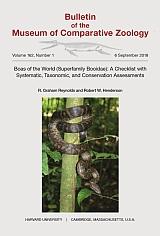





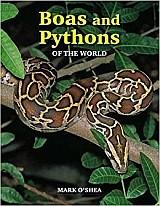

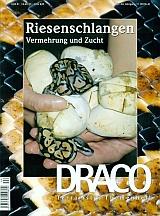

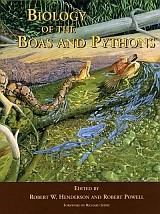

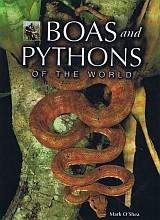

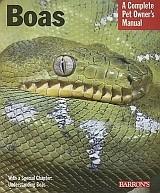

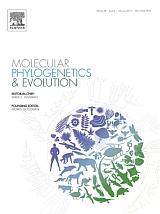

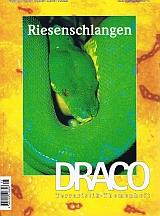

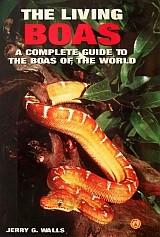

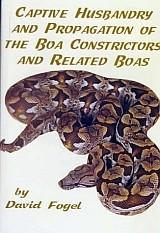

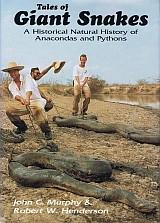

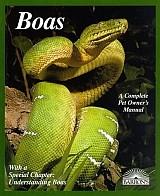

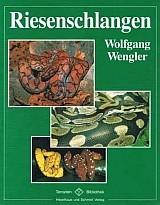

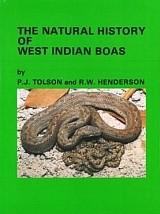

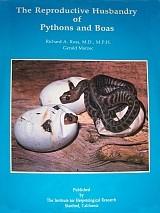

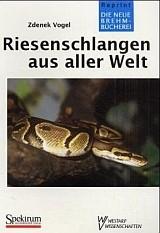

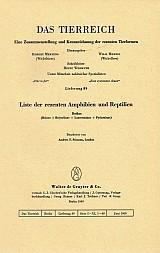

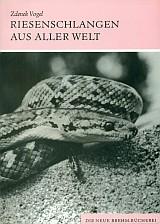











































































































































































|

